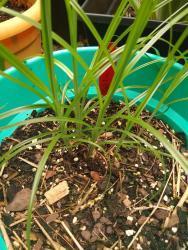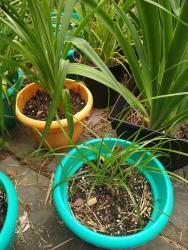One of my daylilies almost died this spring because of rot/slugs, but when it finally came back, the foliage was much thinner than usual, almost like an ornamental grass. I thought it would revert after a while, but it is still growing the same. Have you ever seen this?
When I thought it was dead, I bought a replacement, so I don't need Spell Fire to come back, it's just odd.
Thanks,
Katie





